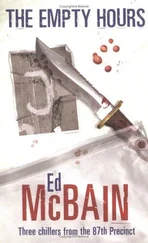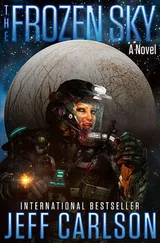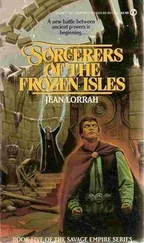“Can I help you, sir?”
He knew the face, the naval doctor, Eugene Hering. Hering had a wide smear of something awful on his apron, looked at Smith with dark, exhausted eyes. Smith focused on the man’s face, heard a hint of hostility in his voice.
“This will be over soon, Doctor. The airstrip will be ready for transport planes in a day or two.”
“If you say so, sir. Please excuse me.”
Hering turned away, moved to the worktable, assisting the other doctor. Smith knew he was out of place here, could offer nothing to help these men do their work. But he could not just leave, said aloud, “We will be out of here very soon. We are doing everything we can.”
No one responded, and Smith pulled the coat tightly around him, backed out of the tent.
—
He stared down at the letter, reread, erased a word, made a correction, wrote again, “Our clerks were out there with weapons. Our lines held.”
He slid the paper aside, thought, I cannot tell her more. I don’t have to. She understands. She knows what I do, and how it is done. She knows there is a cost. I should cry to her, sing sad songs? I won’t give her that. It isn’t a part of me. One day, I will sit with her, and perhaps we will cry. But not now. It’s like Dr. Hering. I offer him encouraging words and he stares at me with a man’s guts on his hands. How is he encouraged about that? All I can really give any of them is confidence. The men must see that, must always feel that from their commander. It is not enough for me to hope that we survive this. We must prevail here. No matter what the fools in Tokyo believe, no matter what they tell us to do, we will win this thing. I believe that, and so we will all believe it. We must believe it. Yes, our lines held. They will hold. And as God is my witness, I will do what must be done to protect these men, to repair the raw, ugly stupidity that sent us out here.
—
Early that morning, another column of armor moved out on the road east of the reservoir, one more attempt to drive through the enemy’s stranglehold on the isolated position of the army’s Thirty-first regimental combat team. A few miles northeast of the Marine perimeter at Hagaru-ri, a dozen tanks, commanded by army captain Robert Drake, had held position at the small village of Hudong-ni, close to the shores of the reservoir. Drake’s plan was to push the armored column through the Chinese roadblocks, blowing open a path of escape for the troops to withdraw back down to Hagaru-ri. The tanks were accompanied by some three dozen infantry, some of those South Korean troops. But Drake’s plan had two major problems. First, the tankers did not have their own forward air controller, and so he could not communicate with the air protection he had hoped for, even as the Corsairs patrolled the skies directly overhead. With no instructions where to place their fire, the Corsairs were partially blind, and ultimately inflicted casualties on both sides. The second problem had more to do with the first effort General Hodes had made to rescue his troops. That column had lost four tanks, one of which completely blocked the only road Drake could use. Drake’s alternative plan was to push his armor directly up the hill that guarded the passageway, which was heavily occupied by Chinese troops. But the tanks could not maneuver up the frozen slopes. Faced with a potential disaster to the column, Drake had no choice but to withdraw once more.
A few miles to the north, the Thirty-first’s commanding officer, Lieutenant Colonel Don Faith, with no radio contact with the tanks, or with anyone at Hagaru-ri, had no idea that anyone had made the effort to help the twenty-eight hundred men in his command.
The only positive that resulted from Drake’s mission was that, now, with no reason to remain at the advance position at Hudong-ni, he ordered the tank column to pull back to the defensive lines at Hagaru-ri, adding to the forces there who had every reason to expect another nighttime attack.
—
Just before ten that morning, Colonel Douglas Drysdale led his nine-hundred-man task force northward out of Koto-ri. Almost immediately, Drysdale confronted the same obstacles that had faced the Americans along every part of the main road. The eleven-mile journey to Hagaru-ri was sliced through by Chinese roadblocks, troop placements fortified by machine guns and mortars. Facing a far stronger enemy than he had anticipated, Drysdale radioed his situation back to Chesty Puller. Puller responded by ordering a company of nearly thirty tanks out of Koto-ri, to add considerable firepower to Drysdale’s column. Drysdale appreciated the advantages the tanks offered, and ordered their commander to distribute the tanks in pairs all along the column. But the tank commander, Captain Bruce Clark, insisted the tanks remain together, a formidable force the Chinese could not hope to stop. Drysdale had no authority over Clark’s command, and the tanks remained mostly clustered together, leading the way north.
Clark’s men soon engaged Chinese targets all along the route, and though most of those fights were one-sided in favor of the armor, the tanks’ slow progress meant that the lengthy column of trucks behind them would move slowly as well. If the tanks were intimidating to the Chinese, not so the column in their wake. With the vulnerable vehicles spread out in a grindingly slow advance, the Chinese attacked the column in several locations, turning a single convoy into at least three separate parts.
Frustrated with the slow progress of the tanks, Drysdale understood what was happening to his task force behind him. The most acceptable alternative seemed to be to withdraw and fight their way back to Koto-ri. But Oliver Smith had a very different view. Reaching Smith by radio, Drysdale explained his situation. Smith, still faced with the desperate need to bolster the defenses around Hagaru-ri, ordered Drysdale to push onward, at all costs. Drysdale responded with typical British aplomb: “Very well, then, we’ll give them a show.”
Late in the evening on November 29, the vanguard of Task Force Drysdale reached the southern perimeter at Hagaru-ri. With Drysdale were most of the tanks, most of his Royal Marine Commandos, and the company of American Marines. At the rear of the convoy, nearly a third of the column, including many of the trucks and supply vehicles, escaped the worst of the Chinese assaults and pulled back in a desperate escape to Koto-ri. But in the center, fully one-third of the task force could not move in either direction, and throughout one awful night were left to the mercy of the Chinese.
HAGARU-RI—NOVEMBER 29, 10:00 P.M.
The tanks had inspired a raucous cheer, the men along the southern perimeter welcoming the added strength of the armor with a mix of joy and exhausted relief. The Marines were welcomed, too, Tom Ridge’s George Company adding to the manpower that Ridge was still shifting into the most vulnerable positions all around the town. But the men at Hagaru-ri had seen these men and their heavy equipment before. What caused the most curiosity, a respectful salute, was the appearance of the Royal Marines. Their dress was different, of course, green berets worn instead of helmets, those men stiffening, a show of perfect decorum as they marched past the men who welcomed them. None carried that decorum with more pride than their commander.
—
Smith stood, Drysdale saluting him, and he stared at the Englishman for a long moment. Drysdale seemed uncertain now, as though he may have violated some kind of American protocol.
“At your service, sir. It was a bit dicey. I very much regret that we could not advance the entire column. It is a rather dismal outcome, to be sure.”
Читать дальше












